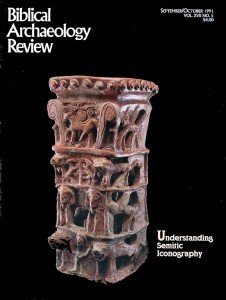
The rise of ancient Israel in Canaan presents one of the greatest cruxes of modern critical Biblical studies: Where, when and how did the Israelites first appear in the Promised Land? Did they enter as conquerors from east of the Jordan River, as the Bible says; were they nomads who gradually settled down more or less peacefully; or were they Canaanites who revolted against their overlords and took to the hills? Since 1978, Adam Zertal has been stalking the mystery by conducting a meticulous archaeological survey of the territory allotted in the Bible to the tribe of Manasseh. This involves walking the land meter by meter and recording every aspect of the terrain, including ancient remains found on the surface—especially settlement sites and potsherds. Zertal found that these form a virtual trail across the landscape when their dates are compared. In “Israel Enters Canaan—Following the Pottery Trail,” Zertal explains how he can track the movement of the Israelites as they entered Manasseh from the east and gradually spread westward across the land.
In a related article, “The Trek of the Tribes as They Settled in Canaan,” Zertal points out that certain clues in the Biblical texts dealing with the tribal allotments also support the idea of an Israelite entry into Canaan from the east, through Manasseh.
Already a library member? Log in here.
Institution user? Log in with your IP address.

